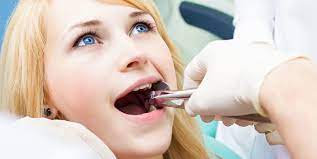Tooth Removal In Dubai is a common dental procedure that may be necessary for a variety of reasons, ranging from severe decay to orthodontic treatment. While the thought of having a tooth extracted can be intimidating, understanding the procedure and its implications can help ease any apprehensions. This article will delve into the factors leading to tooth removal, the extraction process itself, and essential aftercare tips for optimal recovery.
REASONS FOR TOOTH REMOVAL
1. Tooth Decay
Tooth decay is one of the most prevalent reasons for extraction. When cavities are left untreated, they can progress to the point where the tooth cannot be salvaged. In these cases, extraction becomes necessary to eliminate infection and prevent further complications, including damage to surrounding teeth.
2. Impacted Teeth
Impacted teeth, particularly wisdom teeth, can create numerous problems. These teeth may become trapped beneath the gum line or fail to emerge properly, leading to pain, swelling, and potential infection. Dentists often recommend the removal of impacted teeth to prevent future issues, especially during late adolescence or early adulthood when they are most likely to become problematic.
3. Periodontal Disease
Gum disease, or periodontal disease, affects the gums and the bone supporting the teeth. As the disease progresses, it can lead to tooth loosening or loss. In advanced cases, extraction may be necessary to maintain the health of surrounding teeth and gums. Timely treatment of gum disease can often prevent the need for extraction.
4. Overcrowding
In some instances, orthodontic treatment may require tooth removal to create space for proper alignment. Patients with overcrowded teeth may benefit from the extraction of one or more teeth to achieve the desired outcome during orthodontic procedures.
THE TOOTH EXTRACTION PROCEDURE
1. Consultation and Diagnosis
Before a tooth extraction, patients undergo a thorough consultation with their dentist. This includes a comprehensive examination, detailed medical history, and diagnostic imaging, such as X-rays, to assess the condition of the tooth and surrounding structures. This information is vital for determining the appropriate course of action.
2. Anesthesia Administration
To ensure a pain-free experience, local anesthesia is administered to numb the area around the tooth. In more complex cases, sedation may be offered to help the patient relax. The choice of anesthesia depends on the individual’s level of anxiety and the complexity of the extraction.
3. Extraction Process
During a simple extraction, the dentist uses specialized instruments to loosen the tooth and remove it from its socket. In contrast, surgical extractions may require incisions in the gum tissue, especially for impacted teeth. The dentist will carefully handle the extraction to minimize trauma to the surrounding area, ensuring a smoother recovery.
4. Post-Extraction Care
After the tooth is extracted, the dentist will provide specific post-operative care instructions. This may include gauze placement to control bleeding and information on managing pain and swelling. Following these guidelines is crucial for successful recovery.
AFTERCARE AND RECOVERY
1. Pain Management
It is normal to experience some discomfort after a tooth extraction. Pain management is a critical aspect of the recovery process. Dentists often recommend over-the-counter pain medications or may prescribe stronger pain relievers if necessary. Ice packs can also be beneficial for reducing swelling.
2. Dietary Adjustments
Following extraction, it is advisable to follow a soft food diet for the first few days. Foods such as yogurt, mashed potatoes, and smoothies can provide nourishment while minimizing irritation to the extraction site. Patients should also avoid using straws, as sucking can disrupt the healing process.
3. Oral Hygiene Practices
Maintaining proper oral hygiene after a tooth extraction is vital for preventing infection. Patients are usually advised to avoid brushing the extraction site for the first 24 hours. Instead, they can rinse their mouths gently with warm salt water to keep the area clean. It is important to adhere to the dentist's instructions regarding oral care to promote healing.
4. Monitoring Recovery
Patients should monitor their recovery closely. Any signs of excessive bleeding, severe pain, or symptoms of infection, such as fever or swelling, should prompt immediate contact with the dentist. Early intervention can address potential complications before they escalate.
LONG-TERM CONSIDERATIONS POST-EXTRACTION
1. Tooth Replacement Options
After a tooth removal, discussing replacement options with the dentist is essential. Options may include dental implants, bridges, or dentures, depending on the number of teeth removed and individual circumstances. Replacing missing teeth is crucial for restoring function and aesthetics.
2. Impacts on Oral Health
Missing teeth can lead to various complications, including shifting of adjacent teeth and changes in bite alignment. Prompt replacement of extracted teeth can help maintain proper oral function and prevent further dental issues.
3. Importance of Regular Dental Check-ups
After a tooth extraction, maintaining regular dental appointments is crucial. These visits allow the dentist to monitor healing and address any ongoing concerns. Routine check-ups also enable preventive care, which is essential for maintaining overall oral health.
CONCLUSION
Tooth removal is a vital dental procedure that can significantly impact a patient’s oral health. By understanding the reasons for extraction, the process involved, and the importance of aftercare, patients can approach tooth removal with confidence. If you suspect you may need a tooth extraction, consult your dentist to discuss your options and ensure the best outcome for your dental health.





Comments